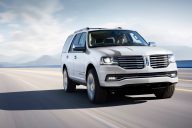Forum Replies Created
-
AuthorPosts
-
bbuddy
ParticipantThe failures are due to hot spots in the top of the block that lead to head gasket failure and coolant entering (often) #3 cylinder. On Youtube Ford Tech Makuloco discusses the EcoBoost coolant issue extensively in one video. You can Google it and watch. The early EB’s had an issue with cylinder cooling passages in the block between #2 and 3 cylinder. Basically the outer bores (#1 and 4) are surrounded on 3 sides with coolant jacket passage while 2 and 3 only have coolant jacket on the front and rear of the bores. This leads to hot spots in the top the block from engine operation but it’s inherent in all in line engines. The EB is aluminum block and head though, so heat transfer and resiliance is an issue (where it wasn’t on older cast iron block and head straight 4 and 6 designs). On the EcoBoost line from 13-16, Ford used a slot at the top of the divider between these bores (1-2, 2-3 and 3-4) cast into the top of the block but the passage get blocked over time by coolant degredation and or debris leading to a hot spot and point failure of the head gasket (again, often at #3 cylinder.) The design was apparently changed by engineers for the 2017 MY so 17-20 MY vehicles may be less prone to the issue. The alteration involved using diagonally drilled holes in the dividers between cylinders (#2 and 3) which increases coolant flow and eliminates the hot spots that lead to head warping, head gasket failure and coolant loss.
Ironically while the EcoBoost family is based loosely on the previous inline Duratec family of non turbo engines, few of them showed this flaw meaning Ford for some reason went with this slot idea over drilled passages when the conversion to the EcoBoost family was made around 2011. Ostensibly it might have been a cost saving measure (a slot in the top of the block between cylinders is likely cheaper to machine than drilling diagonal holes in every block) so the bean counters likely struck a blow here and messed up what was a pretty good product. Ford Tech Makuloco in his video notes this happens on higher mileage EB mills somewhere around the 70-100k range and if it gets catastrophic the engine is a goner. The advice it to watch coolant vigilantly and if the motor starts gulping it and you get misfire codes on the OBD it’s probably bad news. My wifes 16 Fusion has the 1.5 EB. I love the car. But at almost 70k, thinking it’s time to trade it out lest the motor goes in the next 20k miles due to this condition. One word of advice would be to drain and flush the cooling system earlier than the owners manual says (I think the service is at 90K) and try to remove anything floating around in there that may block these slots. And always use the Ford spec coolant because it has the right chemistry and additives for the alloys in these engines.bbuddy
ParticipantSince I own a ’16 Fusion I can relate somewhat. I am looking at the Mach e very seriously and have read a lot about it but have yet to drive it. However, it shares two major characteristics all EVs have that makes the driving experience much different than from an internal combustion engine car: First, no engine noise (other than generated by the computer in the car to simulate some similar experience). You will find that this will take some getting used to as the traditional feedback is no longer there. No feeling of an engine. No transmission shifts. Acceleration is effortless and without the feeling of engine revving as the transmission drops down a gear for passing or merging onto a freeway. So there is some re-configuration of the experience you have been used to for many years. And, Braking is a bit different as well..especially in re-gen mode. Some drivers have reported the brakes feel “grabbier” than they were used to. So there is that adjustment.
In sum the Mach e is a very high performance EV as opposed to a more sedate Nissan Leaf or Chevy Bolt (both of which I’ve tested and found to be peppy but sedate vehicles and oh so quiet without the hum of a motor or the feedback of a transmission). It must be respected for what it is with all that Electric horsepower potential built it.
And the last is Power. The Mach e is a very powerful beast as are most EVs as the energy from the battery is direct to the pavement (no driveline losses). Acceleration is very quick…quicker than you are probably used to in the Fusion. And the Mach will get up to speed very quickly so the tendancy to speed is there. One needs to think a bit about driving the vehicle during the “honeymoon” period.
While I applaud you for making a sounder environmental choice for transport (I drive 25000 miles a year and am looking at EVs very seriously) I would urge you to be very careful. Without sounding ageist, I will say that I’m a touch slower now at 58 than I was at 28. You have mentioned you are about a decade and a half older. As we age our reaction times slow down. This has been proven by many studies. For that reason, my wife has forbidden me from riding motorcycles (a large number of fatalities recently have been among older bikers statistically). So I would close by saying be careful and be conservative as you get to know the new Mach e. Spent some time in an empty parking lot parking it and turning it. Spend some time on empty freeway getting to know it’s handling characteristics. Pretend you’re a teen again and Dad has given you the keys to practice down at the local supermarket before it opens. It’s a whole new mode of transportation than what you’re used to and one should take care to acclimate. Good luck! -
AuthorPosts






